Courant Institute of Mathematical Sciences
| Type | Private research institute |
|---|---|
| Established | 1935 |
Academic affiliation | New York University |
| Director | Russel Caflisch |
Academic staff | 82 |
| Undergraduates | 1,500 |
| Postgraduates | 600 |
| Location | New York City , New York , USA |
| Website | www.cims.nyu.edu |

View of Warren Weaver Hall, Courant Institute of Mathematical Sciences from the Ground Floor of Gould Plaza
The Courant Institute of Mathematical Sciences (CIMS) is an independent division of New York University (NYU) under the Faculty of Arts & Science that serves as a center for research and advanced training in computer science and mathematics. It is considered one of the leading and most prestigious mathematics schools and mathematical sciences research centers in the world[1]. It is named after Richard Courant, one of the founders of the Courant Institute and also a mathematics professor at New York University from 1936 to 1972.
It is ranked #1 in applied mathematical research in US,[2] #5 in citation impact worldwide, and #12 in citation worldwide. On the Faculty Scholarly Productivity Index, it is ranked #3 with an index of 1.84.[3] It is also known for its extensive research in pure mathematical areas, such as partial differential equations, probability and geometry, as well as applied mathematical areas, such as computational biology, computational neuroscience, and mathematical finance. The Mathematics Department of the Institute has 18 members of the United States National Academy of Sciences (more than any other mathematics department in the U.S.) and five members of the National Academy of Engineering. Four faculty members have been awarded the National Medal of Science, one was honored with the Kyoto Prize, and nine have received career awards from the National Science Foundation. Courant Institute professors Peter Lax, S. R. Srinivasa Varadhan, Mikhail Gromov, Louis Nirenberg won the 2005, 2007, 2009 and 2015 Abel Prize respectively for their research in partial differential equations, probability and geometry.[4]Louis Nirenberg also received the Chern Medal in 2010, and Subhash Khot won the Nevanlinna Prize in 2014.
The Director of the Courant Institute directly reports to New York University's Provost and President and works closely with deans and directors of other NYU colleges and divisions respectively.[5] The undergraduate programs and graduate programs at the Courant Institute are run independently by the Institute, and formally associated with the NYU College of Arts and Science and NYU Graduate School of Arts and Science respectively.
Contents
1 Academics
1.1 Rankings
1.2 Admissions
1.3 Graduate program
1.4 Undergraduate program
1.5 Graduation
1.6 Academic research
2 Resources
2.1 Warren Weaver Hall & 715/719 Broadway
2.2 Courant Institute Library
2.3 Computing resources
2.4 Major research resources
3 cSplash and notable student activities
3.1 cSplash
3.2 Extracurricular activities
4 History
5 Directors
6 Notable Courant faculty
7 Notable Courant alumni
8 See also
9 References
10 External links
Academics
Rankings
The Courant Institute specializes in applied mathematics, mathematical analysis and scientific computation. There is emphasis on partial differential equations and their applications. The mathematics department is consistently ranked in the United States as #1 in applied mathematics.[6] Other strong points are analysis (currently #6)[7] and geometry (currently #10).[8] Within the field of computer science, CIMS concentrates in machine learning, theory, programming languages, computer graphics and parallel computing. The computer science program is ranked 28th among computer science programs in the US.[9] In 2017, the Academic Ranking of World Universities placed the Courant Institute as #2 worldwide in the subject ranking for mathematics.[1]
Admissions
The Courant Institute offers Bachelor of Arts, Bachelor of Science, Master of Science and Ph.D. degree programs in both mathematics and computer science with program acceptance rates ranging from 3% to 29%.[10] The overall acceptance rate for all CIMS graduate programs is 15%, and program admissions reviews are holistic. A high undergraduate GPA and high GRE score are typically prerequisites to admission to its graduate programs but are not required. Majority of accepted candidates met these standards. However, character and personal qualities and evidence of strong quantitative skills are very important admission factors. Consistent with its scientific breadth, the Institute welcomes applicants whose primary background is in quantitative fields such as economics, engineering, physics, or biology, as well as mathematics. Undergraduate program admissions are not directly administrated by the Institute but by the NYU undergraduate admissions office of College of Arts and Science.[11][12][13][14]
Graduate program
The Department of Mathematics at the Courant Institute offers PhDs in Mathematics, Atmosphere-Ocean Science, and Computational Biology; Masters of Science in Mathematical Finance, Mathematics, and Scientific Computing.
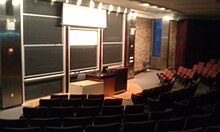
Lecture Hall at Warren Weaver Hall
The Graduate Department of Computer Science offers a PhD in computer science. In addition it offers Master of Science degrees in computer science, information systems (in conjunction with the Stern School of Business), and in scientific computing. For the PhD program, every PhD computer science student must receive a grade of A or A- on the final examination for algorithms, systems, applications, and a PhD-level course chosen by the student that does not satisfy the first three requirements, such as cryptography and numerical methods. Students may take the final exam for any these courses without being enrolled in the course.
The Computer Science Masters program offers instruction in the fundamental principles, design and applications of computer systems and computer technologies. Students who obtain an MS degree in computer science are qualified to do significant development work in the computer industry or important application areas. Those who receive a doctoral degree are in a position to hold faculty appointments and do research and development work at the forefront of this rapidly changing and expanding field. The emphasis for the MS in Information Systems program is on the use of computer systems in business. For the Master of Science in Scientific Computing, it is designed to provide broad training in areas related to scientific computing using modern computing technology and mathematical modeling arising in various applications. The core of the curriculum for all computer science graduate students consists of courses in algorithms, programming languages, compilers, artificial intelligence, database systems, and operating systems. Advanced courses are offered in many areas such as natural language processing, the theory of computation, computer vision, software engineering, compiler optimization techniques, computer graphics, distributed computing, multimedia, networks, cryptography and security, groupware and computational finance. Adjunct faculty, drawn from outside academia, teach special topics courses in their areas of expertise.[15]
Unless outside fellowships or scholarships are available to the students, all admitted Courant PhD students are granted with the GSAS MacCracken award.[16] The fellowship covers the tuition and provides 9 months of stipend along with other benefits such as health insurance and special housing opportunies. The MacCracken funding is renewable for a period of up to five years, assuming satisfactory progress toward the degree.[17]
Doctoral students take advanced courses in their areas of specialization, followed by a period of research and the preparation and defense of the doctoral thesis. Courant Students in Ph.D. programs may earn a master's degree while in progress toward the Ph.D program. Areas where there are special funding opportunities for graduate students include: Mathematics, Mechanics, and Material Sciences, Number Theory, Probability, and Scientific Computing. All PhD candidates are required to take a written comprehensive examination, oral preliminary examination, and create a dissertation defense. Each supported doctoral student has access to his or her own dedicated Unix workstation. Many other research machines provide for abundant access to a variety of computer architectures, including a distributed computing laboratory.[18]
Undergraduate program
The Courant Institute houses New York University's undergraduate programs in computer science and mathematics. In addition, CIMS provides opportunities and facilities for undergraduate students to do and discuss mathematical research, including an undergraduate math lounge on the 11th floor and an undergraduate computer science lounge on the 3rd floor of Warren Weaver Hall.[19][20]
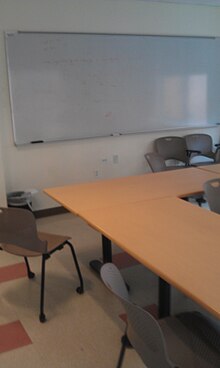
Classroom at Warren Weaver Hall
The mathematics and computer science undergraduate and graduate programs at the Courant Institute has a strong focus on building quantitative and problem-solving skills through teamwork.[21][22] An undergraduate computer science course on Computer Vision, for example, requires students to be in small teams to use and apply recently developed algorithms by researchers around the world on their own. One example assignment requires a student to study a paper written by researchers from Microsoft Research Cambridge in order to do an assignment on Segmentation and Graph Cut. To encourage innovation, students in advanced coursework are allowed to use any means to complete their assignment, such as a programming language of their choice and hacking a Kinect through legal means.[23]
The Courant Institute's undergraduate program also encourages students to engage in research with professors and graduate students. About 30% of undergraduate students participate in academic research through the competitive Research Experiences for Undergraduates program funded by the National Science Foundation or research funded primarily by the Dean's Undergraduate Research Fund. The Courant Institute has one of the highest percentage of undergraduate students doing research within New York University.[24][25][26][27] With permission of their advisers or faculty, undergraduate students may take graduate-level courses. Courant undergraduate students through the years and alumni contribute greatly to the vitality of the Mathematics and Computer Science departments. Some accomplishments by current and former undergraduate Courant students include an Apple Worldwide Developers Conference Scholarship Winner, development of Object Category Recognition Techniques to sort garbage for recycling for the NYC's trash program, placement in 7th out of 42 in the ACM International Collegiate Programming Contest (ICPC), and inventors of the Diaspora (software) social network.[25]
The undergraduate division of the Department of Mathematics offers a Bachelor of Arts (BA) degree in Mathematics. It consists of a wide variety of courses in pure and applied mathematics taught by a distinguished faculty with a tradition of excellence in teaching and research. Students in advanced coursework often participate in formulating models outside the field of mathematics as well as in analyzing them. For example, an advanced mathematics course in Computers in Medicine and Biology requires a student to construct two computer models selected from the following list: circulation, gas exchange in the lung, control of cell volume, and the renal countercurrent mechanism. The student uses the models to conduct simulated physiological experiments.[28]
The undergraduate division of the Department of Computer Science offers a Bachelor of Arts (BA) degree, and fours minors. These are the computer science minor, web programming and applications minor, joint minor in computer science/mathematics, and the computer science education minor available in collaboration with NYU Steinhardt[29]. The BA degree can also be pursued with honors. Students may combine the degree with other majors within the College of Arts and Science to create a personalized joint major. Two specific combined degrees are the joint major in computer science/economics and the joint major in computer science/mathematics. The Department of Computer Science also offers a BS/BE Dual Degree in computer science and engineering and an accelerated master's program available to qualifying undergraduates in conjunction with the Tandon School of Engineering.[30]
Graduation
The Courant Institute encourages students at any stage of their studies, including the very early stage, to seek summer employment opportunities at various government and industry facilities. In the past few years, Courant students have taken summer internships at the National Institute of Health, Los Alamos National Laboratory, Lawrence Berkeley National Laboratory, Woods Hole Oceanographic Institution, Lawrence Livermore National Laboratory and NASA, as well as Wall Street firms. Such opportunities can greatly expand students' understanding of the mathematical sciences, offer them possible areas of interest for thesis research, and enhance their career options. Members of the faculty (and in particular the students' academic advisors) can assist students in finding appropriate summer employment. All graduate students are given official advisers, and undergraduates are provided mentors from Courant faculty.
Academic research
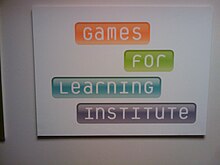
The Courant Institute along with Microsoft Research are the founders of the Games for Learning Institute
The Department of Mathematics at Courant occupies a leading position in analysis and applied mathematics, including partial differential equations, differential geometry, dynamical systems, probability and stochastic processes, scientific computation, mathematical finance, mathematical physics, and fluid dynamics. A special feature of the Institute is its highly interdisciplinary character — with courses, seminars, and active research collaborations in areas such as financial mathematics, materials science, visual neural science, atmosphere/ocean science, cardiac fluid dynamics, plasma physics, and mathematical genomics. Another special feature is the central role of analysis, which provides a natural bridge between pure and applied mathematics. The Department of Computer Science has strengths in multimedia, programming languages and systems, distributed and parallel computing, and the analysis of algorithms.
Since 1948, Courant Institute has maintained its own research journal, Communications on Pure and Applied Mathematics, which currently has the highest impact factor internationally among mathematics journals.[31] While the journal represents the full spectrum of the Institute's mathematical research activity, most articles are in the fields of applied mathematics, mathematical analysis, or mathematical physics. Its contents over the years amount to a modern history of the theory of partial differential equations. Most articles originate within the Institute or are specially invited. The Institute also publishes its own series of lecture notes. They are based on the research interests of the faculty and visitors of the Institute, originated in advanced graduate courses and mini-courses offered at the Institute.
Resources
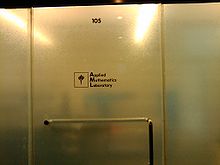
Applied Mathematics Laboratory
Warren Weaver Hall & 715/719 Broadway
CIMS consists of the NYU Departments of Mathematics and Computer Science as well as a variety of research activities. It is housed in Warren Weaver Hall on Mercer Street in NYU's Greenwich Village campus. Unlike many NYU buildings, it did not have an NYU flag, but the flag has recently been added and is waved with pride. The building contains lecture halls on the first and second floors, two meeting/seminar rooms on every floor from the 3rd floor to the 13th floor, a large common lounge on the 13th floor used for studying and open discussions in topics of mathematics and computer science, and its own extensive Courant library on the 12th floor. It also houses a variety of well-equipped laboratories and offices in Warren Weaver Hall for students and faculty to do research and discuss topics in mathematical sciences. In addition to Warren Weaver Hall, the Computer Science Department is located at 715/719 Broadway, where most of its laboratories and offices are located.[32]
Courant Institute Library
The Courant Institute Library contains one of the United States's most complete mathematics collections with more than 275 journals and 54,000 volumes. Faculty and students at CIMS have access to MathSciNet and Web of Science (also known as the Science Citation Index), and a vast database containing hundred thousands of electronic journals related to mathematics and computer science.[33]

Center for Atmosphere-Ocean Science
Computing resources
The Courant Institute has an IBM eServer BladeCenter system capable of peak performance of 4.5 TeraFlops. The acquisition of this supercomputer was funded by IBM and federal funding and is used primarily for research by the faculty and graduate and undergraduate students of the institute.[34] Computers at the Institute run Windows XP Professional, Solaris, Mac OS X, and Red Hat Enterprise Linux operating systems. There are also many other specialized Linux-based operating systems for research purposes. Every faculty and student office room is fully equipped with scientific software and computer stations. Wi-Fi and X terminals are available in public locations and every faculty and student office.
All graduate students are provided with an account to access computers and other resources within the Institute's network. Undergraduate students are provided CIMS accounts with the approval of their advisor, sponsorship by a Courant professor, advanced coursework, or for research purposes. The Institute's computing resources are not accessible to others without sponsorship by a CIMS professor or approval by either the Department of Mathematics or Department of Computer Science. Faculty, staff, and students with Courant account have access to free full-featured software provided by the MSDN Academic Alliance and specialized computing resources used primarily for research.[35][36][37]
Major research resources
CIMS houses an advanced multimillion-dollar Courant Applied Mathematics Laboratory that opened in 1998, co-founded by Stephen Childress and Michael Shelley, and sponsored by US Department of Energy and the National Science Foundation. It comprises an experimental facility in fluid mechanics and other applied areas and a visualization and simulation facility.[38] The Center for Atmosphere-Ocean Science is also housed at CIMS and is an interdisciplinary research and graduate program within the Courant Institute of Mathematical Sciences.[39]
cSplash and notable student activities
cSplash
Every year, CIMS offers cSplash or Courant Splash, a festival mathematics and computer science program for high school students. It is a one-day festival of classes in the mathematical and computer sciences, designed and taught by graduate and undergraduate students, faculty, and others associated with the Courant Institute of Mathematical Sciences.[40]
Extracurricular activities
There are many clubs within the Courant Institute open to undergraduate and graduate students alike. These clubs include the Courant Student Organization, The ACM at NYU, Women-in-Computing (WinC), The Mathematics Society, Masters Association for Computer Science and many more. Additionally, CIMS sponsors and holds seminars and colloquiums almost daily on weekdays on topics of interest, in which some of whom may be held outside of Warren Weaver Hall. Many speakers of these seminars and colloquiums are experienced researchers from corporations from a variety of industries and researchers from private and government research laboratories, top universities, and NYU. Every academic year, CIMS holds award ceremonies, showcases, and parties to celebrate their faculty and undergraduate and graduate students and keep the academic atmosphere fun and enjoyable at CIMS. One such example is the NYU Computer Science Department Showcase held every semester to showcase projects that have been completed in various computer science graduate and undergraduate courses.[41][42][43][44][45]
History
In 1934, Richard Courant left Göttingen University in Germany to become a visiting professor at NYU. He was given the task of building up the Department of Mathematics at the NYU Graduate School of Arts and Science. He was later joined by Kurt O. Friedrichs and James J. Stoker. In 1946, the department was renamed "Institute for Mathematics and Mechanics". Also in 1946, NYU Professor Morris Kline focused on mathematical problems of electromagnetic wave propagation. This project gave rise to the Institute's Division of Wave Propagation and Applied Mathematics. In 1952, the U.S. Atomic Energy Commission installed one of the first (electronic) computers at New York University, which led to the creation of the Courant Mathematics and Computing Laboratory. The Division of Magnetofluid Dynamics was initiated by a project on plasma fusion by NYU Professor Harold Grad in 1954. The Institute was in the forefront of advanced hardware use, with an early IBM 7094 and the fourth produced CDC 6600. The Division of Computational Fluid Dynamics was created in 1978, arising from a project of NYU Professor Paul R. Garabedian.
Directors
| Image | Name | Timespan |
|---|---|---|
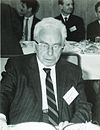 | Richard Courant | (1935–1958) |
| James J. Stoker | (1958–1966) | |
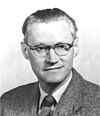 | Kurt O. Friedrichs | (1966–1967) |
| Jürgen Moser | (1967–1970) | |
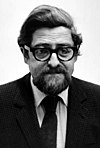 | Louis Nirenberg | (1970–1972) |
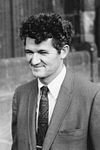 | Peter Lax | (1972–1980) |
| S. R. Srinivasa Varadhan | (1980–1984) | |
| Cathleen Synge Morawetz | (1984–1988) | |
| Henry McKean | (1988–1994) | |
| David W. McLaughlin | (1994–2002) | |
| Charles M. Newman | (2002–2006) | |
| Leslie Greengard | (2006–2011) | |
| Gérard Ben Arous | (2011–2016) | |
| Richard Cole | (2016–2017) | |
| Russel E. Caflisch | (2017–present) |
Notable Courant faculty
This is a small selection of Courant's famous faculty over the years and a few of their distinctions:[46]
Gérard Ben Arous, Davidson Prize
Marsha Berger, NASA Software of the Year, National Academy of Engineering, National Academy of Sciences- Richard Bonneau
Robert A. Bonic, co-Author Freshman Calculus; Sr. research scientist and computer professor; 1972 to 1975 collaboration with Industrial Designer George A. Sgouros in the research, design, and development of the first Computer Logic Training Modules (LOGICUBES)- Fedor Bogomolov
Luis Caffarelli, Wolf Prize
Sylvain Cappell, Guggenheim Fellowship
Sourav Chatterjee, Davidson Prize
Jeff Cheeger, Veblen Prize, National Academy of Sciences, American Academy of Arts and Sciences, Guggenheim Fellowship, Max Planck Research Prize
Steven Childress, Guggenheim Fellowship, American Physical Society Fellow
Demetrios Christodoulou, 1993 MacArthur Fellow, National Academy of Sciences, American Academy of Arts and Sciences, Shaw Prize, Bôcher Memorial Prize
Richard J. Cole, Guggenheim Fellowship
Martin Davis, Steele Prize
Percy Deift, George Pólya Prize, Guggenheim Fellowship, National Academy of Sciences, American Academy of Arts and Science
Kurt O. Friedrichs, 1976 National Medal of Science
Paul Garabedian, NAS Prize in Applied Mathematics, National Academy of Sciences, American Academy of Arts and Science
James Glimm, Steele Prize
Leslie Greengard, Steele Prize, Packard Foundation Fellowship, NSF Presidential Young Investigator, National Academy of Engineering, National Academy of Sciences, American Academy of Arts and Science
Mikhail Gromov, 2009 Abel Prize, Wolf Prize, Steele Prize, Kyoto Prize, Balzan Prize, National Academy of Sciences, American Academy of Arts and Science- Larry Guth
Martin Hairer, 2014 Fields Medal
Helmut Hofer, Ostrowski Prize, National Academy of Sciences
Fritz John, 1984 MacArthur Fellow
Joseph B. Keller, 1988 National Medal of Science, Wolf Prize
- Michel Kervaire
Subhash Khot, 2010 Alan T. Waterman Award, 2014 Nevanlinna Prize
- Bruce Kleiner
- Morris Kline
Peter Lax, Abel Prize winner, 1986 National Medal of Science, Steele Prize, Wolf Prize, Norbert Wiener Prize
Lin Fanghua, Bôcher Memorial Prize, American Academy of Arts and Science- Wilhelm Magnus
Andrew Majda, NAS Prize in Applied Mathematics, John von Neumann Prize (SIAM)
Henry McKean, National Academy of Science, American Academy of Arts and Science
David W. McLaughlin, National Academy of Science, American Academy of Arts and Science
Bud Mishra, Association for Computing Machinery Fellow
Cathleen Synge Morawetz, 1998 National Medal of Science, Steele Prize, Birkhoff Prize, Noether Lecturer, National Academy of Sciences, American Academy of Arts and Science
Jürgen Moser, Wolf Prize, James Craig Watson Medal
Assaf Naor, European Mathematical Society Prize, Packard Fellowship, Salem Prize, Bôcher Memorial Prize, Blavatnik Award
Charles Newman, National Academy of Science, American Academy of Arts and Science
Louis Nirenberg, Crafoord Prize, National Medal of Science, Steele Prize, Bôcher Memorial Prize, Chern Medal, Abel Prize, National Academy of Sciences, American Academy of Arts and Science
Charles S. Peskin, 1983 MacArthur Fellow, Birkhoff Prize, National Medal of Science,
Amir Pnueli, National Academy of Engineering, Israel Prize, Turing Award, Association for Computing Machinery Fellow
Peter Sarnak, Wolf Prize
Jack Schwartz, who developed the programming language SETL at NYU and was in charge of the Robotics group.
Michael J. Shelley, American Physical Society Fellow, François Naftali Frenkiel Award (APS)
Victor Shoup, who with Ronald Cramer developed the Cramer–Shoup cryptosystem
- Jonathan Sondow
- Joel Spencer
- K. R. Sreenivasan
Daniel L. Stein, Fellow of American Physical Society, Fellow of American Association for the Advancement of Science
S. R. Srinivasa Varadhan, Abel Prize winner, Steele Prize, National Academy of Sciences, American Academy of Arts and Science, Fellow of the Royal Society, National Medal of Science
Akshay Venkatesh, Salem Prize, Packard Fellowship, 2018 Fields Medal
- Olof B. Widlund
Margaret H. Wright, National Academy of Science, National Academy of Engineering
Lai-Sang Young, Satter Prize, Guggenheim Fellowship, American Academy of Arts and Science
Notable Courant alumni
This is a small selection of Courant's alumni:
Anjelina Belakovskaia (Masters in Finance 2001), U.S. Women's Chess Champion.
Anita Borg (PhD 1981), founding director of the Institute for Women and Technology (IWT)
Alexandre Chorin, (PhD 1966) National Medal of Science
Charles Epstein (PhD 1983), hyperbolic geometry
Jeffrey Epstein, financier and sex offender[47]
Kenneth M. Golden (PhD 1984), applied mathematics of sea ice, Fellow of the Explorers Club
Corwin Hansch (PhD 1944), statistics
Joseph B. Keller, 1988 National Medal of Science, Wolf Prize
Barbara Keyfitz (PhD 1970), Director of the Fields Institute
David Korn (PhD 1969), creator of the Korn shell,
Sergiu Klainerman (PhD 1978), Professor at Princeton
Morris Kline (PhD 1936), NYU Professor (1938–1975)
Martin Kruskal, (PhD 1952) National Medal of Science, co-discoverer of solitons and the inverse scattering method for solving KdV
Peter Lax (PhD 1949), recipient of the Abel Prize, National Medal of Science, Steele Prize, Wolf Prize, Norbert Wiener Prize
Chen Li-an, (PhD 1968) Taiwanese Minister of Defence
Brian J. McCartin (PhD 1981), recipient of the 2010 Chauvenet Prize,
Cathleen Morawetz (PhD 1950), National Medal of Science, Birkhoff Prize, Lifetime Achievement Award from the AMS, professor emeritus at Courant Institute
Louis Nirenberg (PhD 1949), Crafoord Prize, Bôcher Memorial Prize, National Medal of Science, Chern Medal, Abel Prize
Stanley Osher (PhD 1966), Level Set method, professor at University of California, Los Angeles, Gauss Prize
George C. Papanicolaou (PhD 1969), professor at Stanford University
Susan Mary Puglia (BA in Computer Science and Math), Vice President at IBM
Sashi Reddi (serial entrepreneur, venture capitalist, angel investor, a technologist and a philanthropist)
Gary Robinson, software engineer noted for anti-spam algorithms[48][49]
Shmuel Weinberger (PhD 1982), topology and geometry, Professor at University of Chicago
Jacob Wolfowitz (PhD 1942),
See also
- Mikhail Gromov
- Peter Lax
- Louis Nirenberg
- Amir Pnueli
- S. R. S. Varadhan
- List of New York University people
References
^ ab "ShanghaiRanking's Global Ranking of Academic Subjects 2017 - Mathematics - Shanghai Ranking - 2017". www.shanghairanking.com..mw-parser-output cite.citation{font-style:inherit}.mw-parser-output .citation q{quotes:"""""""'""'"}.mw-parser-output .citation .cs1-lock-free a{background:url("//upload.wikimedia.org/wikipedia/commons/thumb/6/65/Lock-green.svg/9px-Lock-green.svg.png")no-repeat;background-position:right .1em center}.mw-parser-output .citation .cs1-lock-limited a,.mw-parser-output .citation .cs1-lock-registration a{background:url("//upload.wikimedia.org/wikipedia/commons/thumb/d/d6/Lock-gray-alt-2.svg/9px-Lock-gray-alt-2.svg.png")no-repeat;background-position:right .1em center}.mw-parser-output .citation .cs1-lock-subscription a{background:url("//upload.wikimedia.org/wikipedia/commons/thumb/a/aa/Lock-red-alt-2.svg/9px-Lock-red-alt-2.svg.png")no-repeat;background-position:right .1em center}.mw-parser-output .cs1-subscription,.mw-parser-output .cs1-registration{color:#555}.mw-parser-output .cs1-subscription span,.mw-parser-output .cs1-registration span{border-bottom:1px dotted;cursor:help}.mw-parser-output .cs1-ws-icon a{background:url("//upload.wikimedia.org/wikipedia/commons/thumb/4/4c/Wikisource-logo.svg/12px-Wikisource-logo.svg.png")no-repeat;background-position:right .1em center}.mw-parser-output code.cs1-code{color:inherit;background:inherit;border:inherit;padding:inherit}.mw-parser-output .cs1-hidden-error{display:none;font-size:100%}.mw-parser-output .cs1-visible-error{font-size:100%}.mw-parser-output .cs1-maint{display:none;color:#33aa33;margin-left:0.3em}.mw-parser-output .cs1-subscription,.mw-parser-output .cs1-registration,.mw-parser-output .cs1-format{font-size:95%}.mw-parser-output .cs1-kern-left,.mw-parser-output .cs1-kern-wl-left{padding-left:0.2em}.mw-parser-output .cs1-kern-right,.mw-parser-output .cs1-kern-wl-right{padding-right:0.2em}
^ "Search: Sciences Programs | US News". US News. Retrieved 2015-05-06.
^ "Faculty Scholarly Productivity Index". The Chronicle. 2007-11-16. Retrieved 2011-08-06.
^ Foderaro, Lisa W. (2009-06-01). "Complex Math, Simple Sum: 3 Awards in 5 Years". The New York Times.
^ "NYU > Courant Institute > About > Courant and NYU". Cims.nyu.edu. Retrieved 2011-08-06.
^ "Best Applied Mathematics Programs | Top Math Schools | US News Best Graduate Schools". Grad-schools.usnews.rankingsandreviews.com. Retrieved 2014-03-14.
^ "Best Mathematical Analysis Programs | Top Math Schools | US News Best Graduate Schools". Grad-schools.usnews.rankingsandreviews.com. Retrieved 2014-03-14.
^ "Best Geometry Programs | Top Math Schools | US News Best Graduate Schools". Grad-schools.usnews.rankingsandreviews.com. Retrieved 2014-03-14.
^ "Best Computer Science Programs | Top Computer Science Schools | US News Best Graduate Schools". Grad-schools.usnews.rankingsandreviews.com. Retrieved 2011-08-06.
^ "NYU computer science •". Thegradcafe.com. Retrieved 2011-08-06.
^ "Courant Institute of Mathematical Sciences NYU". Math.nyu.edu. Retrieved 2011-08-06.
^ "Graduate Mathematics Courses". Math.nyu.edu. Retrieved 2011-08-06.
^ "NYU Computer Science Department > Graduate Admissions Information". Cs.nyu.edu. Retrieved 2011-08-06.
^ "Department of Mathematics Admissions - New York University (Department of Mathematics)". Petersons.com. Retrieved 2011-08-06.
^ "NYU Computer Science Department > Graduate Programs in Computer Science". Cs.nyu.edu. Retrieved 2011-08-06.
^ "Financial Support - Department of Mathematics - NYU Courant". www.math.nyu.edu.
^ "MacCracken Housing Program for Doctoral Students". gsas.nyu.edu.
^ "The Ph.D. Program". Math.nyu.edu. 2005-09-01. Retrieved 2011-08-06.
^ "Math Lounge". Math.nyu.edu. 2005-09-01. Archived from the original on 2011-07-18. Retrieved 2011-08-06.
^ "New York University - MSc Mathematics in Finance". Global-derivatives.com. Retrieved 2011-08-06.
^ "NYU Computer Science Department > Undergraduate Program". Cs.nyu.edu. Retrieved 2011-08-06.
^ "Department of Mathematics, Courant Institute". Math.nyu.edu. 2005-09-01. Retrieved 2011-08-06.
^ "V22.0480-001". Cs.nyu.edu. Retrieved 2011-08-06.
^ "NYU > A & S > Dean's Undergraduate Research Fund". Cas.nyu.edu. Archived from the original on 2011-06-29. Retrieved 2011-08-06.
^ ab "Undergraduate Student Spotlight - NYU Computer Science Department". Cs.nyu.edu. Retrieved 2011-08-06.
^ [1] Archived May 31, 2010, at the Wayback Machine
^ "NYU Computer Science Department > Undergraduate Program". Cs.nyu.edu. Retrieved 2011-08-06.
^ "Powered by Google Docs". Docs.google.com. Retrieved 2011-08-06.
^ "CS Minors | NYU Computer Science". cs.nyu.edu. Retrieved 2019-04-06.
^ "NYU Computer Science Department > Undergraduate CS Program Overview". Cs.nyu.edu. Retrieved 2011-08-06.
^ "Wiley Online Library". .interscience.wiley.com. Retrieved 2011-08-06.
[dead link]
^ "Getting to the Courant Institute". Cims.nyu.edu. 2005-09-01. Retrieved 2011-08-06.
^ [2][dead link]
^ "NYU Today". Nyu.edu. Retrieved 2011-08-06.
^ NYU Computer Science. Retrieved August 2011
^ "NYU > Courant Institute > Connecting to CIMS FAQ". Cims.nyu.edu. Retrieved 2011-08-06.
^ "NYU > Courant Institute > Network Access". Cims.nyu.edu. Retrieved 2011-08-06.
^ "AML". Math.nyu.edu. Retrieved 2011-08-06.
^ "Center for Atmosphere Ocean Science | New York University". Caos.cims.nyu.edu. Retrieved 2011-08-06.
^ "Courant Splash! - cSplash". Cims.nyu.edu. Retrieved 2011-08-06.
^ "NYU > Courant Institute > Weekly Bulletin". Cims.nyu.edu. Retrieved 2011-08-06.
^ "New York University - Women in Computing". Cs.nyu.edu. Retrieved 2011-08-06.
^ "Courant Student Organization:: New York University". Cims.nyu.edu. Retrieved 2011-08-06.
^ "NYU Mathematics Society: Home". Math.nyu.edu. 2010-04-24. Retrieved 2011-08-06.
^ "The ACM at NYU". Cs.nyu.edu. 2011-02-22. Archived from the original on 2011-08-14. Retrieved 2011-08-06.
^ "NYU > Courant Institute > About > Scientific Distinction". Cims.nyu.edu. 2005-09-01. Retrieved 2011-08-06.
^ Jr. (Email), By Landon Thomas. "Jeffrey Epstein: International Moneyman of Mystery". NYMag.com.
^ "Gary Robinson". Google. 2010-09-18. Retrieved 2010-09-18.I make the music recommendation technology at http://www.flyfi.com -- ... Schools I've attended Bard College; Courant Institute of Mathematical Sciences
^ Gary Robinson (Mar 1, 2003). "A Statistical Approach to the Spam Problem: Using Bayesian statistics to detect an e-mail's spamminess". Linux Journal. Retrieved 2010-09-18.This article discusses one of many possible mathematical foundations for a key aspect of spam filtering—generating ...
External links
- Courant Institute of Mathematical Sciences
- Department of Mathematics, New York University
- Applied Mathematics Laboratory
- New York University Computer Science
- New York University Mathematics in Finance
- New York University Scientific Computing
- http://www.cims.nyu.edu/~csplash/index.php
- NYU Mathematics Society, New York University
- http://www.cs.nyu.edu/~wincweb/
- http://www.cs.nyu.edu/~macsweb/
- https://web.archive.org/web/20090414012602/http://cs.nyu.edu/~acmweb/wordpress/
Coordinates: 40°43′43″N 73°59′44″W / 40.72858°N 73.99552°W / 40.72858; -73.99552